Overwhelmed by Information
One of the great benefits of social media is the immediacy of information, old and new. One of the downsides is that it is impossible to keep up with all the information streaming into our lives daily. I have several favorite blogs including EarthSky News, Knowable Magazine and Nature Briefing which send regular nature articles to my computer. All this does not even include Facebook postings from friends and other messaging. Unfortunately I have neither the time nor the interest to devote proper attention to all of this. And so, much reading is hit-or-miss and I am sure that I miss more than I would like.
Lucky Choice
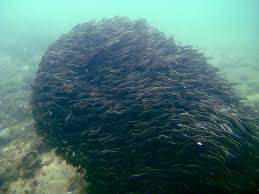
A glance at this underwater location from the Abyss Dive Center in Bali shows a large vigorous mass rolling along the ocean bottom. Fish swim, crabs walk, anemones sway, but what was this rolling phenomenon that I was looking at??
An Identification
The video identifies this school of fish as juvenile striped eel catfish ( Plotosus lineatus – Plotos in Greek means “swimming”) . As the video progresses two things become apparent: the ball is made up of numerous individual fish which can number up to one hundred . The second fact is that the fish rotate position continuously, feeding at the ocean bottom for a moment and then rotating to the back of the ball until they rotate back into position at the bottom again. They are busy hungrily scooping up crustaceans, mollusks and worms from the seabed.
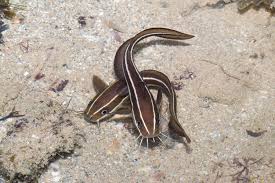
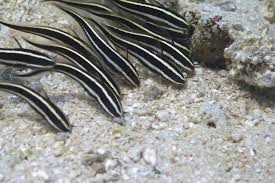
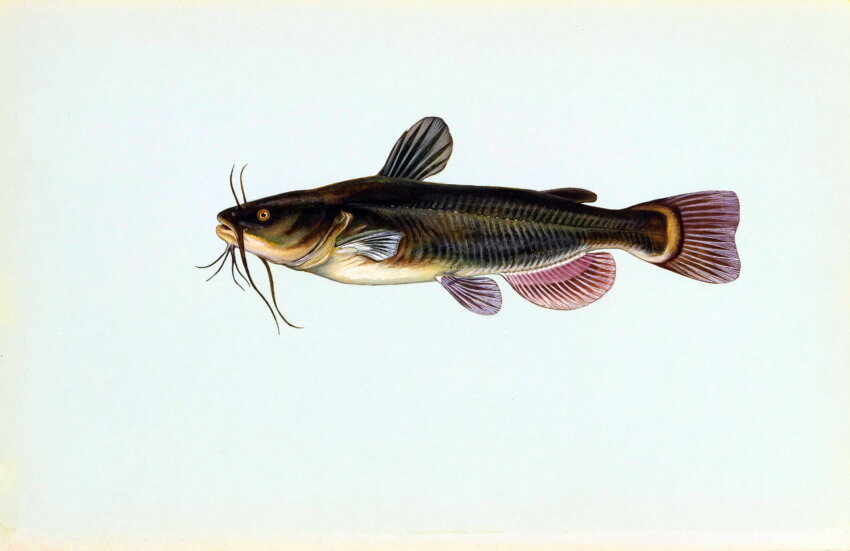
One of the visible characteristics of catfish are the barbels around the mouth. These are slender, whisker-like sensory organs, the name of which comes from the Middle (Medieval) Latin barbula meaning” little beard”. These are not exclusive to catfish, being found on many other fish including sturgeon and hagfish. The striped eel catfish has four barbels on the upper jaw and four on the bottom. They house the fish’s taste buds and aid in the search for food.
The eel part of the name of the striped eel catfish comes from the fusion of the second dorsal, caudal and anal fins, which is identical to the fin fusion in eels. Eels have a ribbon of those fused fins running along the length of the body. Because of the similarity in appearance, the Plosidae family are known as the eeltail catfish.
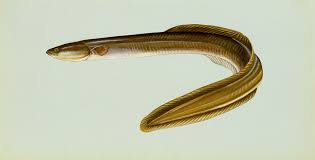
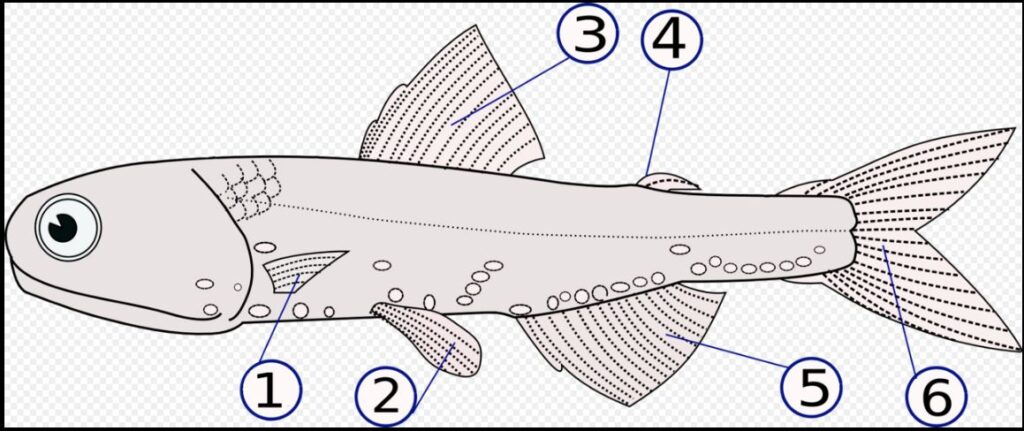

The striped eel catfish is native to the Indian Ocean and the western Pacific Ocean. However, with the construction of the Suez Canal in 1869, it invaded the Mediterranean Sea where it has become an invasive species and is known as a Lessepsian migrant. The latter name derives from Ferdinand de Lesseps, a French diplomat who negotiated and later oversaw the construction of the Suez Canal. Its wider meaning is the migration of animals and plants facilitated by a man-made structure.
As the fish mature, they cease swarming. Instead, they may swim alone or congregate in small groups. The swarming behavior is thought to reduce the risk from predators. These are the only catfish found in coral reefs but they are also swim through sea grass, estuaries, tide pools and open coasts where they prefer water up to 40” deep. They are dangerous to touch since they have several venomous spines that can inflict severe pain and even death to humans.
The Ocean is Terra Incognita
Our world is generally divided into land, air and water. While we see and are aware of birds that utilize the air, we are generally unaware of those creatures beneath the surface of the water. We miss a lot!
https://youtu.be/ChWOq3rRxOE Thanks for turning me on to this fascinating YouTube video. ***ic***